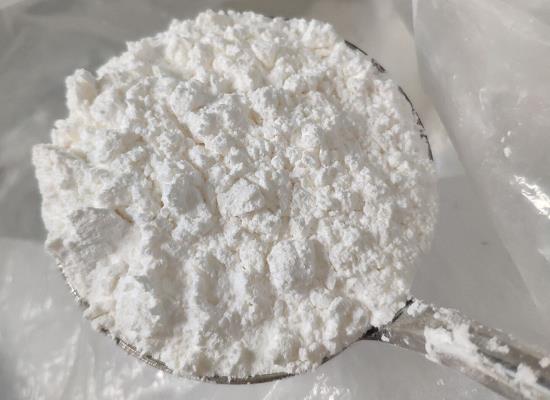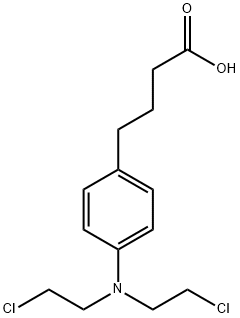Chlorambucil: History and It-Based Hybrid Compounds with Anticancer Activity
General Description
Chlorambucil, an alkylating agent developed in the 1950s, has been widely used in treating various cancers. However, its lack of specificity, drug resistance, toxicity, and short half-life have posed challenges. To enhance efficacy and reduce adverse effects, researchers have explored modifications, including incorporating the butyric acid group. Additionally, Chlorambucil-based hybrid compounds, such as Chlorambucil–Estradiol and Chlorambucil–Tyrosine hybrids, have been synthesized and evaluated for their anticancer activity, particularly targeting breast cancer. These compounds have shown promising cytotoxic and anticancer effects in vitro, indicating their potential as treatments for breast cancer, although further in vivo studies are needed to validate their effectiveness.

Figure 1. Chlorambucil
History
Chlorambucil is an alkylating agent that falls under the aryl nitrogen mustard class of drugs. Developed in the early 1950s by Alexander Haddow, it was first reported for its biological activity on malignant lymphoma in 1955. This drug, alongside melphalan and busulphan, has been utilized as a primary treatment for chronic lymphocytic leukemia, myeloma, and myeloid leukemia. In 2008, the FDA approved Chlorambucil for clinical use in treating chronic lymphocytic leukemia and indolent B-cell non-Hodgkin lymphoma. While widely employed in treating various cancers such as Hodgkin’s disease, chronic lymphosarcoma, and malignant lymphoma, Chlorambucil faces limitations such as lack of specificity, drug resistance, toxicity, and a short half-life. These challenges have prompted researchers to explore modifications to enhance its efficacy and reduce adverse effects. As a nitrogen mustard alkylating agent, Chlorambucil exerts its anticancer effects by cross-linking and binding DNA, thereby inhibiting cell proliferation and DNA replication in cancer cells. However, its non-specific toxicity towards normal cells contributes to chemoresistance. Therefore, there is a critical need to modify Chlorambucil, potentially through incorporating the butyric acid group, to improve its selectivity and decrease harm to healthy cells. By enhancing its activity while minimizing toxicity, researchers aim to develop more effective and targeted anticancer therapies based on Chlorambucil's mechanism of action. 1
Chlorambucil-Based Hybrid Compounds with Anticancer Activity
Chlorambucil–Estradiol Hybrids
Chlorambucil–Estradiol hybrids are a class of compounds that have been synthesized and investigated as potential treatments for breast cancer. The compounds were created by introducing Chlorambucil at different positions of the estrone moiety, and their anti-breast cancer activity was evaluated against various cancer cell lines. The study found that these compounds exhibited moderate cytotoxic activity in vitro, with the effectiveness being influenced by factors such as chain length and concentration. Specifically, it was observed that increasing the chain length compromised the cytotoxic effect of the compounds. Compound 1a, with a short chain length, demonstrated superior cytotoxic effects against hormone-independent cancer cell lines, whereas compound 2 showed no anticancer effect against any of the breast cancer cell lines used in the study. Furthermore, modifying the hydroxymethyl group at position 16β of the estrone moiety resulted in biologically inactive compounds in vitro. These findings suggest the importance of further elucidating the biological activity of these compounds in vivo to better understand their potential as breast cancer treatments. Similar results have been reported by other researchers, highlighting the need for additional research in this area. 2
Chlorambucil–Tyrosine Hybrids
Chlorambucil–Tyrosine Hybrids are a class of hybrid compounds that have been synthesized and evaluated for their anticancer activity, specifically targeting breast cancer cell lines. Descôteaux et al. reported the synthesis of these hybrids, combining Chlorambucil with D- and L-tyrosine analogues, resulting in compounds with enhanced anticancer effects compared to Chlorambucil alone. The L-hybrids showed superior anticancer activity with lower IC50 values (between 19.39 and 67.90 µM) compared to the D-hybrids. Further studies revealed that the long chain length between the parental molecules and increased solubility contributed to the improved anticancer effects of specific compounds, such as L-4b and D-4b. Moreover, Brasseur and Descôteaux explored different chemical methods to synthesize compounds 5–10, which exhibited varying IC50 values and specificity towards hormone-dependent cancer cells. Pocasap et al. focused on synthesizing Chlorambucil–tyrosine hybrids (11a and 11b) via esterification and amidation reactions, demonstrating higher antiproliferative activity than Chlorambucil alone, with compound 11b showing preferable stability in enzymatic environments. Further animal studies are recommended to validate the potential of these hybrid compounds as effective chemotherapeutic agents for breast cancer. 2
Reference
1. Guo Q, Liu Y, Mu G, et al. A peptide-drug hydrogel to enhance the anti-cancer activity of chlorambucil. Biomater Sci. 2020; 8(20): 5638-5646.
2. Peter S, Aderibigbe BA. Chlorambucil-Bearing Hybrid Molecules in the Development of Potential Anticancer Agents. Molecules. 2023; 8(19): 889.
);Related articles And Qustion
See also
Lastest Price from Chlorambucil manufacturers

US $0.00/g/Bag2024-09-18
- CAS:
- 305-03-3
- Min. Order:
- 10g
- Purity:
- 99%min; USP
- Supply Ability:
- 60kg/month

US $0.00-0.00/Kg2020-02-26
- CAS:
- 305-03-3
- Min. Order:
- 1KG
- Purity:
- 99.0%+
- Supply Ability:
- 1000 tons




